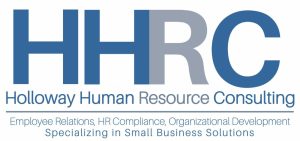 The second of seven pre-defined Oregon minimum wage increases took effect on July 1, 2017. Enacted by the 2016 Oregon Legislature, Senate Bill 1532 established a series of annual minimum wage rate increases beginning July 1, 2016 through July 1, 2022. Beginning July 1, 2023, any increases to the minimum wage rate will be indexed to inflation based on the Consumer Price Index (CPI), a figure published by the United States Bureau of Labor Statistics.
The second of seven pre-defined Oregon minimum wage increases took effect on July 1, 2017. Enacted by the 2016 Oregon Legislature, Senate Bill 1532 established a series of annual minimum wage rate increases beginning July 1, 2016 through July 1, 2022. Beginning July 1, 2023, any increases to the minimum wage rate will be indexed to inflation based on the Consumer Price Index (CPI), a figure published by the United States Bureau of Labor Statistics.
In addition to the new standard minimum wage rate, the bill establishes two separate minimum wage rates that apply to:
- Employers located in the urban growth boundary of a metropolitan service district. (Currently, only the Portland metropolitan area has an urban growth boundary.)
- Employers located within certain “nonurban” counties named in the bill.
The table below outlines the rates and effective dates of each minimum wage increase:
| Date | Standard | Portland Metro | Nonurban Counties |
| January 1, 2016 | $9.25 | $9.25 | $9.25 |
| July 1, 2016 | $9.75 | $9.75 | $9.50 |
| July 1, 2017 | $10.25 | $11.25 | $10.00 |
| July 1, 2018 | $10.75 | $12.00 | $10.50 |
| July 1, 2019 | $11.25 | $12.50 | $11.00 |
| July 1, 2020 | $12.00 | $13.25 | $11.50 |
| July 1, 2021 | $12.75 | $14.00 | $12.00 |
| July 1, 2022 | $13.50 | $14.75 | $12.50 |
| July 1, 2023 | Adjusted annually based on the increase, if any, to the US City average Consumer Price Index for All Urban Consumers | $1.25 over the standard minimum wage | $1 less than the standard minimum wage |
Portland Metro
The Portland Metro rate applies to employers located within the Urban Growth Boundary (UGB) of the metropolitan service district. Employers can search by address to determine whether a worksite is located inside the UGB with Metro’s Urban Growth Boundary lookup tool.
- A map of the UGB is also available for download.
NOTE: Employers located within Washington, Multnomah and Clackamas counties but NOT within the UGB will be subject to the standard rate, not the metro rate.
Nonurban counties
The nonurban wage rate applies to employers located within the following counties:
| Baker | Klamath |
| Coos | Lake |
| Crook | Malheur |
| Curry | Morrow |
| Douglas | Sherman |
| Gilliam | Umatilla |
| Grant | Union |
| Harney | Wallowa |
| Jefferson | Wheeler |
The Oregon Bureau of Labor and Industries (BOLI) has provided a Q & A to help employers navigate some of the new changes to the minimum wage:
Q. What is the federal minimum wage?
A. The current federal minimum wage remains $7.25 per hour.
Q. So which minimum wage am I required to pay my employee – the state or the federal?
A. When federal and state employment laws conflict, employers must apply whichever standard is most beneficial to the employee. Therefore, Oregon employers must pay the higher state minimum wage.May I pay my new employees a training wage which is below the minimum wage?A. No. Unlike federal law, Oregon law requires that employees receive at least minimum wage during all stages of employment. This includes any period of on-the-job training.
Q. May I count an employee’s tips against the minimum wage?
A. No. Oregon law does not allow for tip credits. ORS 653.035(3).
Q. If I hire minors, do I need to pay them minimum wage?
A. Yes. Under Oregon law the minimum wage applies to minors.
Q. I provide meals and lodging for my employee. May I count the fair market value of the meals and lodging towards the minimum wage obligation?
A. Yes, employers may make an authorized deduction for meals and lodging so long as they are provided for the “private benefit” of the employee. However, if you require your employee to live on-site, or if you derive a mutual benefit from the employee living on the premises, you must pay minimum wage in addition to the value of meals and lodging. OAR 839-020-0025.
Note that employers may not require an employee to pay (e.g., by direct charge) amounts that could not have been lawfully deducted from wages under the minimum wage law, if to do so would reduce that employee’s minimum wage earnings.
Q. I currently pay my employee $11 per hour ($1.25 above the July 1, 2016 to June 30, 2017 standard minimum wage). He claims that as of July 1, 2017, I will be legally obligated to pay him at least $11.50 per hour ($1.25 cents above the July 1, 2017 to June 30, 2018 minimum wage). Is that right?
A. No. The law only requires you to pay the minimum wage of $10.25 (standard) per hour as of July 1, 2017, unless you have a contract or policy providing that you will pay more, only those employees who were working for less than $10.25 per hour are legally required to receive a raise.
Q. If I pay my employee on a commission, does the minimum wage law still apply?
A. Yes. Unless your employee falls into an exempt category, you must pay the employee at least minimum wage for all hours actually worked. This means that even with a commissioned employee, you must track all daily and weekly hours worked to determine whether the average hourly rate meets the minimum wage. If the average hourly rate is less than the minimum wage in any pay period, you must boost the employee’s wages up to the minimum wage.
Q. My employee, who normally earns $13.00 per hour, travels as part of her job duties. May I pay her at a lower hourly rate for the travel time?
A. Yes, as long as you pay at least the minimum wage for each hour worked.
Posters
Oregon employers are required to display the current minimum wage poster a conspicuous place where employees may regularly view them. Employers with more than one work location are generally required to display these posters at each worksite.
The minimum wage posters are revised annually. Use the links below to download the current English and Spanish versions of the Oregon Minimum Wage Rate posters Effective July 1, 2017:
English – Minimum Wage Poster July 1, 2017 – June 30, 2018
Spanish – Minimum Wage Poster July 1, 2017 – June 30, 2018
2017 Holloway HR Consulting

